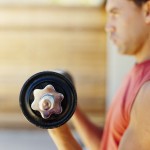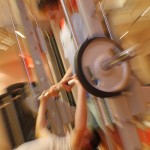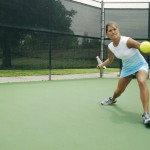 If the public exercise forum of the gym is something new to you, it can be intimidating. All that equipment, all those people, and “where can I put my keys?” Have no fear, it’s pretty simple to get in and get out with a smile (and a good amount of sweat) on your face without a hitch.
If the public exercise forum of the gym is something new to you, it can be intimidating. All that equipment, all those people, and “where can I put my keys?” Have no fear, it’s pretty simple to get in and get out with a smile (and a good amount of sweat) on your face without a hitch.
Just like in any organization, the gym has both spoken and unspoken rules or “codes of conduct.” Familiarize yourself with these simple etiquette guidelines to guarantee that you’ll have a positive and productive workout experience, while empowering others to do the same.
Below are some basic gym tips to help you navigate the world of working out!
Lock away cell phones.
Spending your (and others) workout time walking around talking on your phone takes away from not only yours, but everyone else’s workout. Leave the cell phone in your locker or keep it with you in silent or vibrate-mode for absolute emergencies.
Don’t leave a sweat “autograph.”
A good lather of sweat is great, and means you’re working hard to forge a new body of steel. However, a sweaty machine is not a pleasant welcome for the next exerciser. After you’re done with a piece of equipment, wipe it off for the next person.
Choose the right gym.
There are now many different types of gyms offering many different types of exercise experiences. Make sure when you go to a gym to sign up, you feel comfortable and welcome.
If you like to lift heavy weights with loud music, the local mom and pop “Fun Fit” might not be a place for you. If you’re just getting started going to a gym, the local bodybuilding/powerlifting mecca might not provide the experience for which you are looking.
Luckily, there are now options for everyone to find a place they feel at home!
You may be a better door than a window.
Narcissistic or not, gyms are surrounded with mirrors for a reason. Gym-goers not only like to see their progress, but mirrors provide feedback on form and technique.
If someone is looking in the mirror while doing an exercise, it’s rude to walk in between him or her and the mirror. It can be distracting and take away from their focus. Either walk around them, or wait until they are done with their exercise.
Put away weights, plates, or any other equipment when finished.
This is the cardinal rule of using a public gym, yet it is probably the most frequently broken one. It’s a concept we are introduced to in kindergarten. When you’re done, put it away.
Make sure to put everything you use back where it came from. That way,someone else doesn’t have to spend half their workout time cleaning up a mess they didn’t make.
Brett Klika C.S.C.S., author of “The Underground Workout Manual- Exercise and Fat Loss in the Real World” (www.undergroundworkoutmanual.com is a world- renowned human performance specialist, motivational speaker, author, and educator. In his 15-year career, Brett has accrued more than 20,000 hours of training with youth, athletes, executives, and everyday people. He uses this knowledge and experience to motivate individuals and audiences around the world through his writing, speaking and DVD’s. For his free blog or to try the Underground Workout Manual for FREE, visit www.brettklika.com.
 Subscribe
Subscribe
